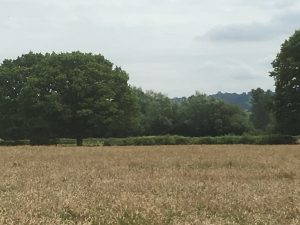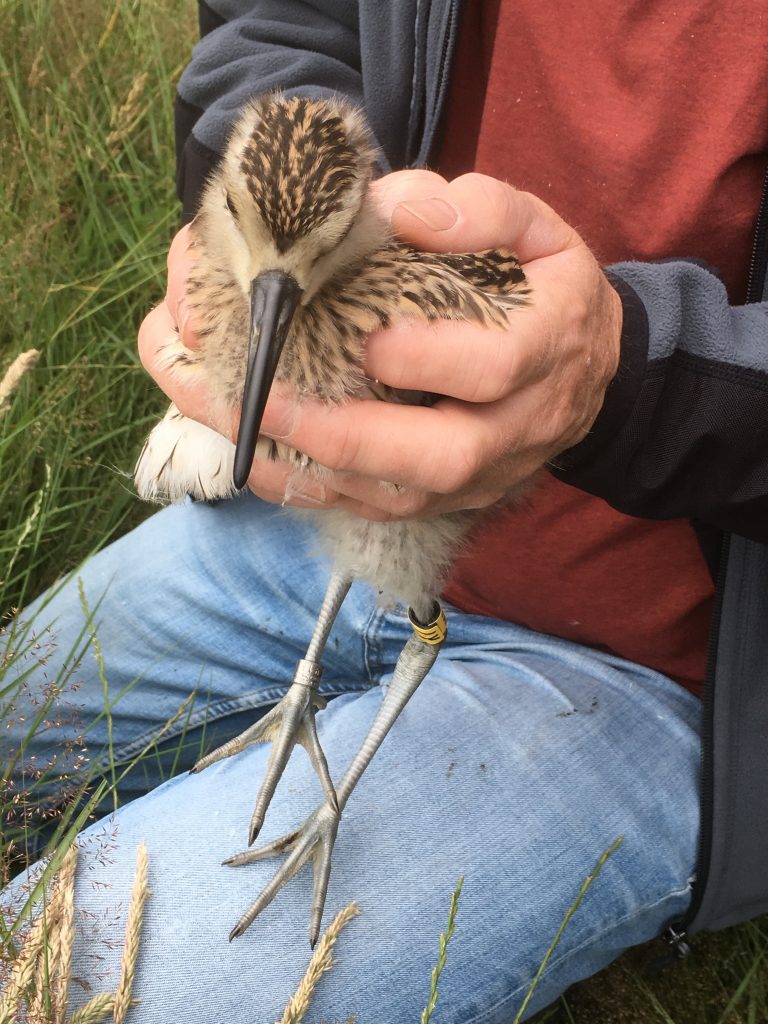
Wynford Jones and his wife Joyce were the first farmers to contact the Landscape Partnership Scheme when it was set up back in 2013. With my colleague John Brayford, I am responsible for the Farming Project and took the call. Wynford was in fact phoning not for advice, but to say that he was not interested in participating in the Landscape Partnership Scheme. To cut a long story short Wynford later helped the Scheme hugely by superbly hosting a farm open day for us, and then participated in our grant scheme.

Over the years we have talked about curlew and lapwing in the Camlad Valley and Wynford and Joyce have reported sightings, but never had curlew nest on their land. During this time the farm was struck down with TB along with many others in the valley. The loss of prize winning Simmenthal cattle so carefully nurtured to be shot on ‘the yard’ in such horrible circumstances was almost unendurable for the family and its business. The Jones’ were keen to retire and evade the possibility of a recurrence of TB, but eventually forced to make decisions about their future and livelihoods, have resumed farming in a small way. They now rent out land to other local farmers alongside much smaller stock enterprises on the land around the farmhouse and buildings. In fact the new business led to buying and selling bits of land and this year Wynford and Joyce had just completed the purchase of some neighbouring land when we told them that there was a curlew nest on it. They were delighted and excited. They are both keen on wildlife and have implemented habitat improvements and wildlife friendly measures on the farm, but had become disillusioned with ‘the system’ (hence their original request not to be part of the Landscape Partnership Scheme).

Three chicks were ringed and radio tagged by Tony Cross, the project ornithologist, and on several subsequent visits for weighing and measuring were found to be growing well. On a visit when they should have been about 4 weeks old only two could be found. One of these then also disappeared. Shortly afterwards a contractor spied a chick away from the hay field on another part of the farm by itself. Sure enough this was one of the missing chicks and then the third chick also re-appeared.
The field was due to be cut for hay, but the Jones’ were determined not to do anything that would harm the chicks. At first they were keen to leave part of the field un-cut for them, but as time went by they could not bear to risk the chicks being caught up in the mowing and decided to leave the whole field uncut, this at prime cutting time. The weeks went by as we waited for the chicks to fledge. The chick sightings went down to 2 again. Wynford went out in the early mornings and evenings to check on them out of interest. He saw them move out of the hay field to forage in adjacent fields that were being grazed or had been recently grazed by cattle and told us that they had fledged as he saw them practising their initial short flights. By this time the hay crop had started to lose condition and would soon be lost altogether and it was decided that it was safe to cut it, as the chicks had not returned to the field for over a week or so and were now flying reasonably well. Then Wynford saw a buzzard feeding on what looked like a chick carcass in the hedge. On investigation he found the remains of a chick (although Tony later examined the remains and from the chew markings on the feathers thought it more likely that the original predator was actually mammalian).

The contractor arrived to mow the field, but on that day the curlew were not to be seen anywhere and were assumed to have moved following successful chick fledging. To the Jones and Tony Cross’ horror the contractor then reported seeing a chick come out of the back of the mower!! To everyone’s astonishment it flew off. This is the chick that was reported to have fledged fully in the above mentioned email.
The rollercoaster of emotions linked to the experiences of the chicks during the life of this little brood has been marked, and well demonstrates many of the problems that we will need to negotiate and understand better in ensuring chick survival during the future of the Curlew Country Project.

